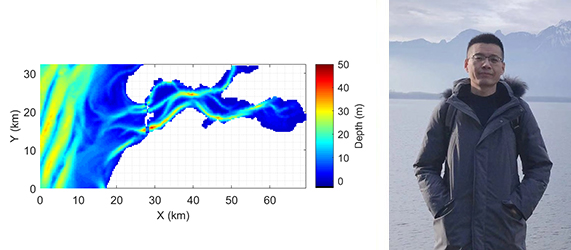Sensitivity scenarios were run to examine the relative roles of tides, winds, gravitational flow, and freshwater discharge in driving the intra-annual variability. Results indicate that gravitational flow and winds contribute most to the intra-annual variability. Freshets from the Westerschelde and Rhine Rivers extending to the mouth of the bay can reduce the axial density gradient and gravitational flow, resulting in longer turnover times of the basin.
Yield of shellfish culture in the Oosterschelde is largely affected by seston renewal from the North Sea. We used surveyed bivalve biomass (WMR data) and empirical filtration rates to estimate the effects of aquaculture on the seston replenishment. The filtration created strong bio-deposition suppressing the landward seston transport and causing less than 10% of external seston to be delivered to the landward ends. This simple approach combining effects of physics and benthic communities can be applied more generally in food sustainability assessments of tidal bays.
Long Jiang, Postdoc at EDS, is working on estuarine and coastal hydrodynamics and biogeochemical modeling with Theo Gerkema and Karline Soetaert since 2017. Before joining NIOZ, Long got his PhD at the University of Maryland, USA.
